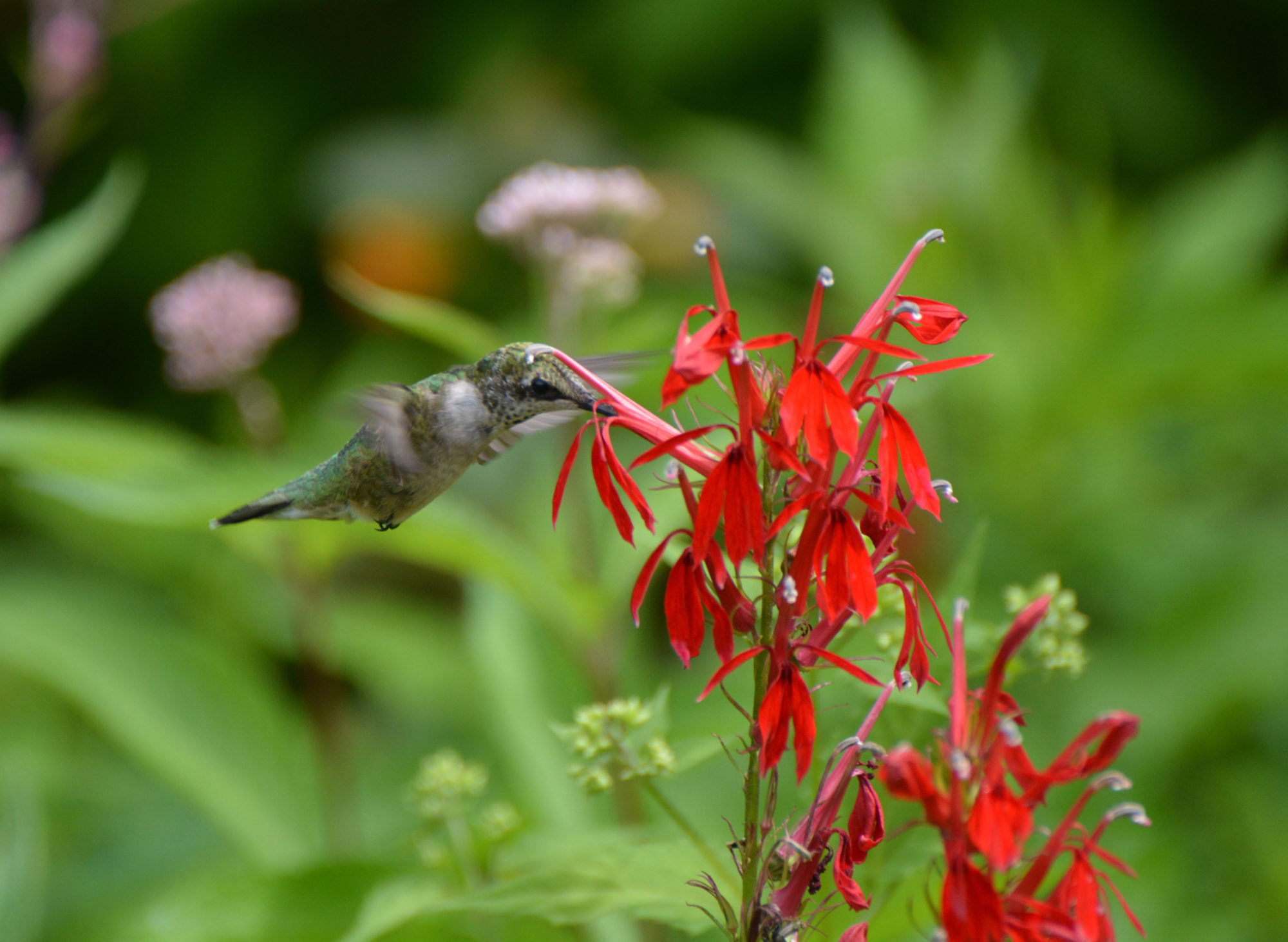As with much of the country, Baltimore Woods has its share of invasive plants (and animals). Some were introduced unintentionally in shipping containers and so on, but, sadly, most are escapees from our gardens for the last few hundred years.
Some invaders found at Baltimore Woods
Swallow-wort (Vincetoxicum spp.)
There are two varieties: Pale (Vincetoxicum rossicum; syn. Cynanchum rossicum) and Black swallow-wort or black dog-strangling vine (Vincetoxicum nigrum; syn. Cynanchum louiseae)
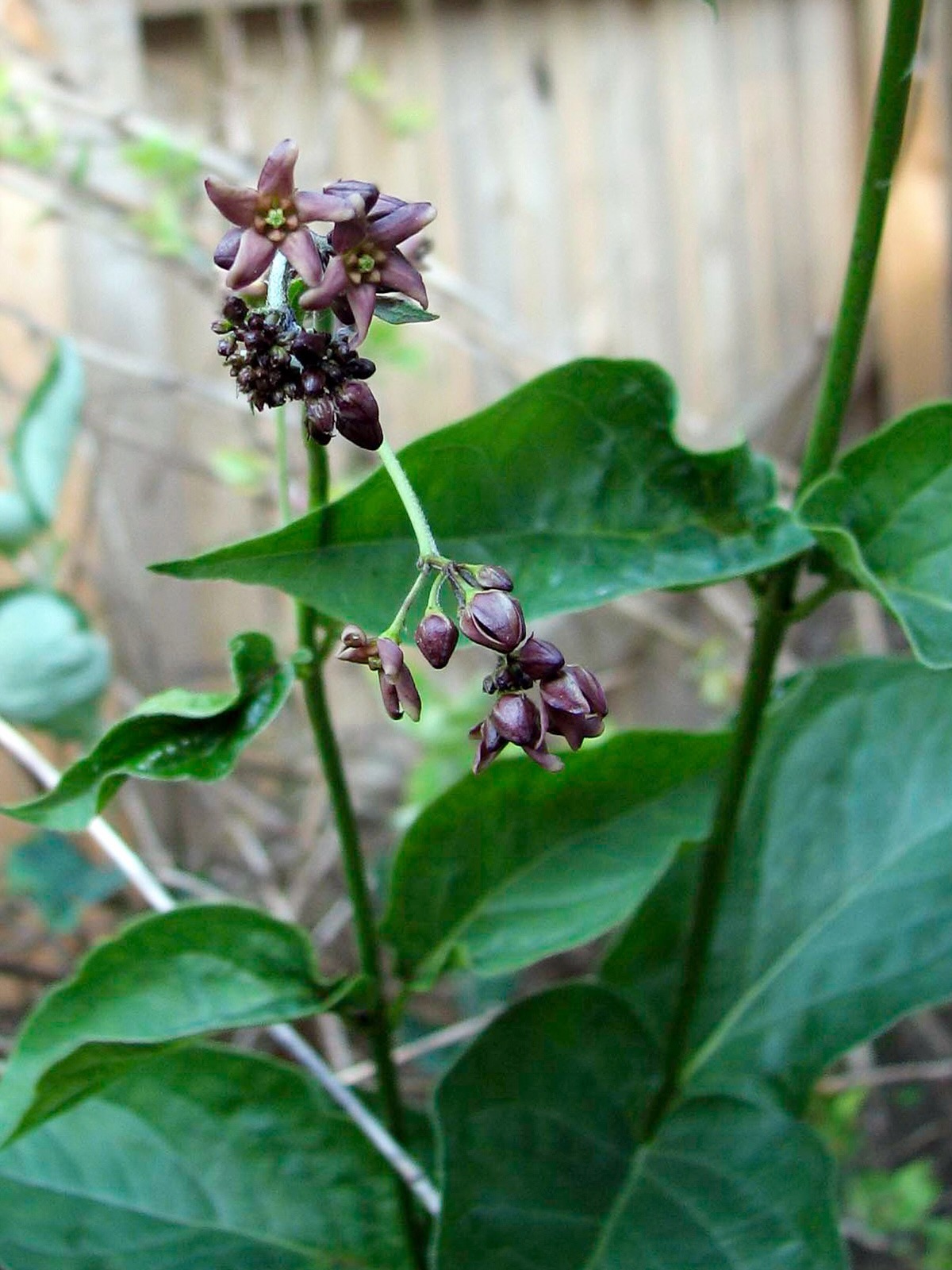
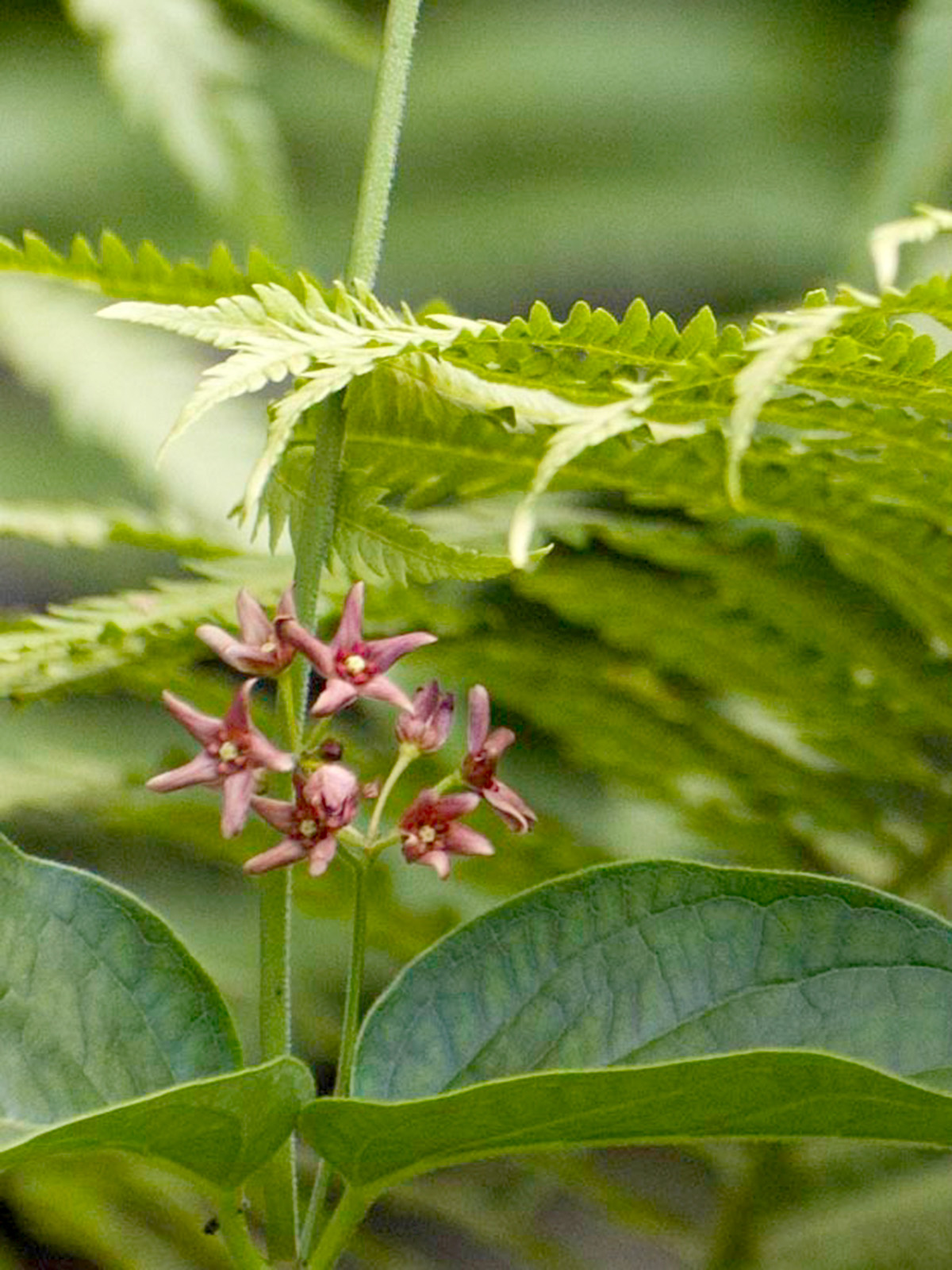
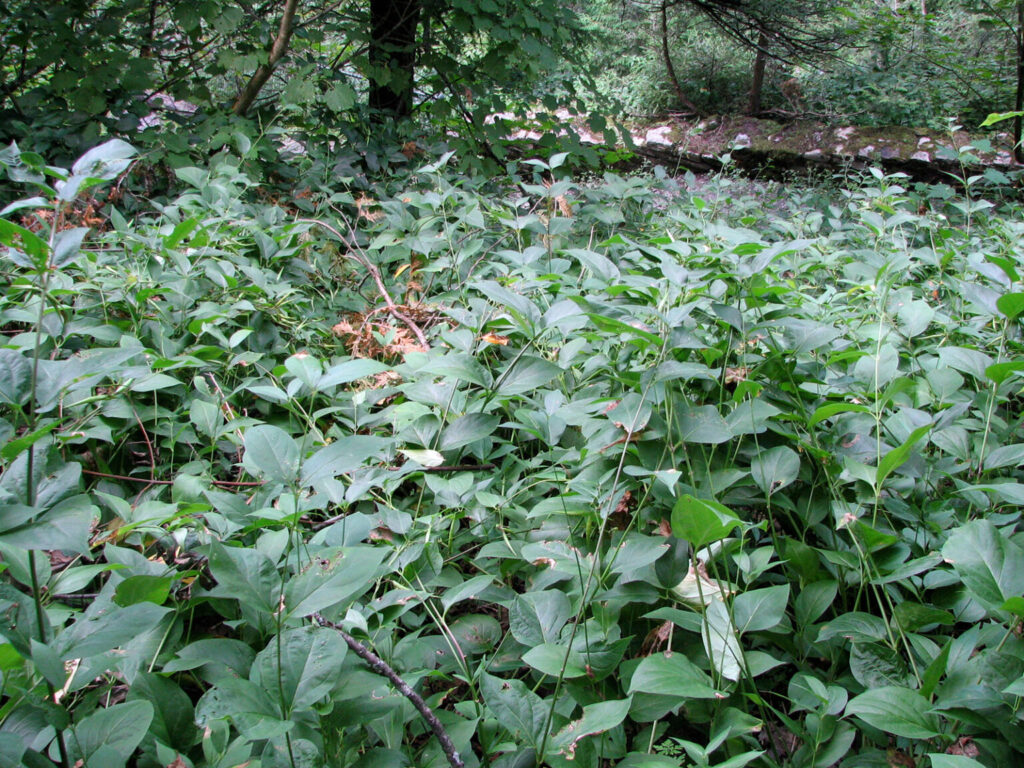
Swallow-wort can take over an area and is difficult to get rid of.
Worse, as a milkweed relative, it’s a monarch trap, attracting adults to lay eggs, but not supporting the development of the caterpillars.
- Learn more:
- NY Invasive Species: Swallow-wort
Garlic mustard (Alliaria petiolata)
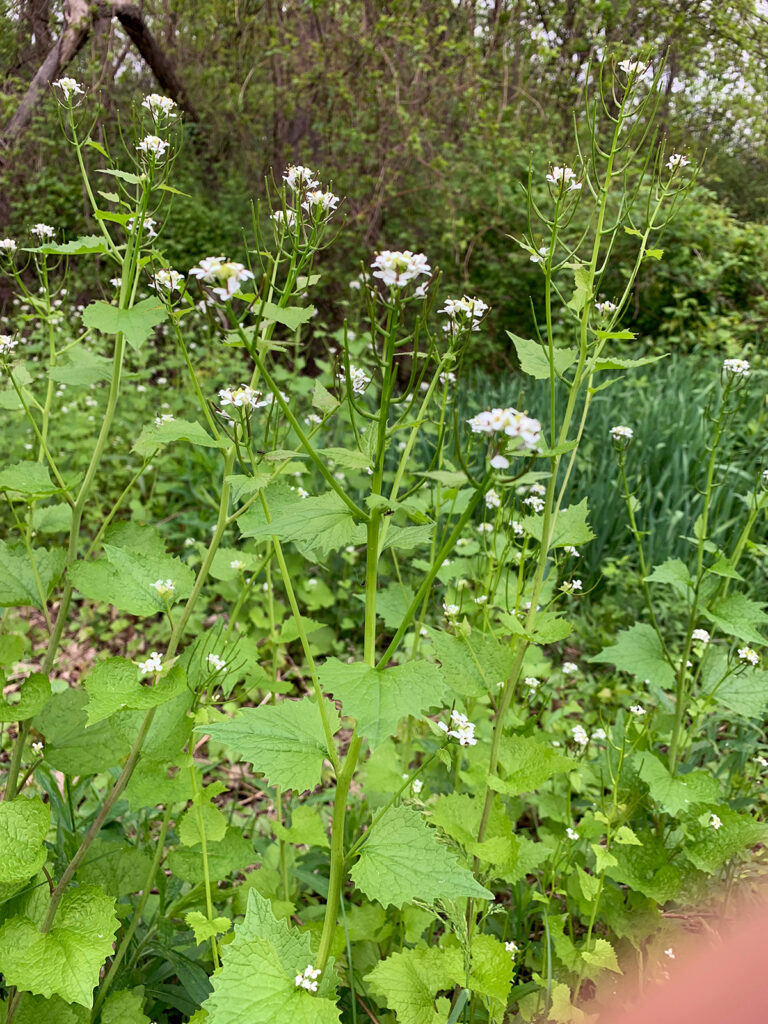
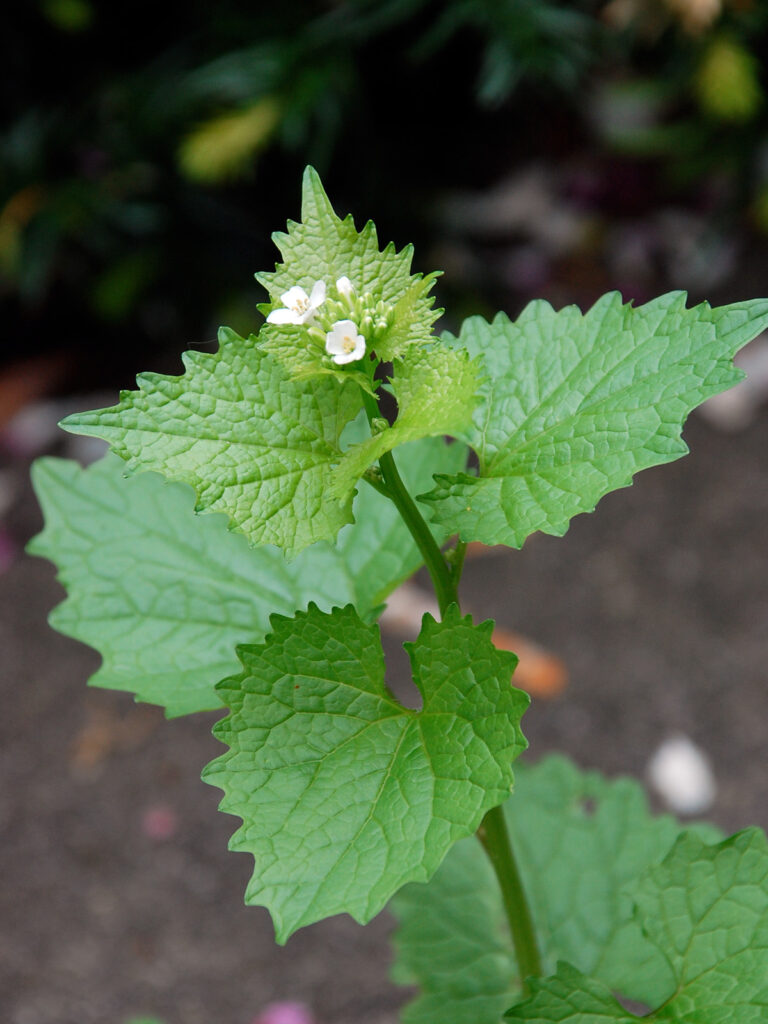
This invasive crowds out other plants, and its generous seed production makes it imperative to remove before the seeds mature.
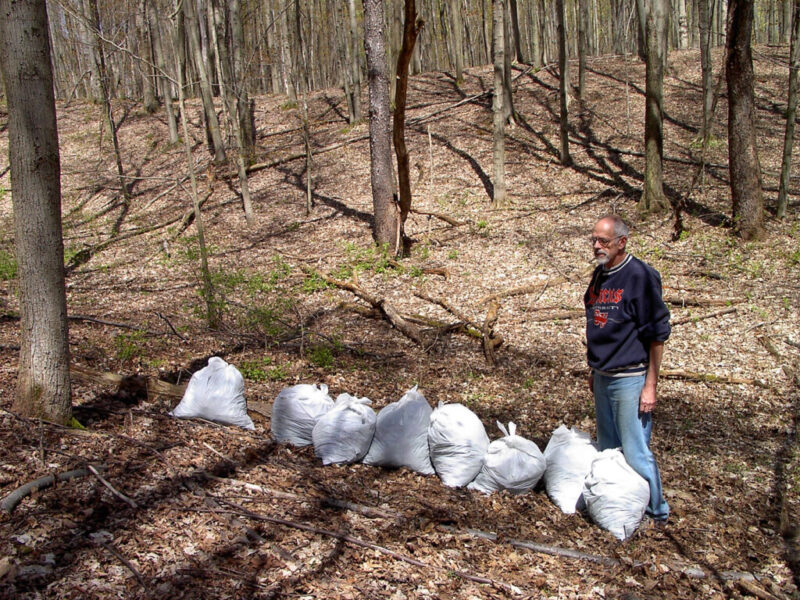
HGCNY’s small group of dedicated volunteers has made a dent in “our” section of Baltimore Woods, though it requires many years of effort.
We’ll be happy to see the many beautiful wildflowers that Baltimore Woods is known for beginning to spread into these former garlic mustard areas.
- Learn more:
- NY Invasive Species: Garlic mustard
- Nature Conservancy: Garlic mustard – Invasive, destructive, edible
Buckthorn (Rhamnus cathartica)
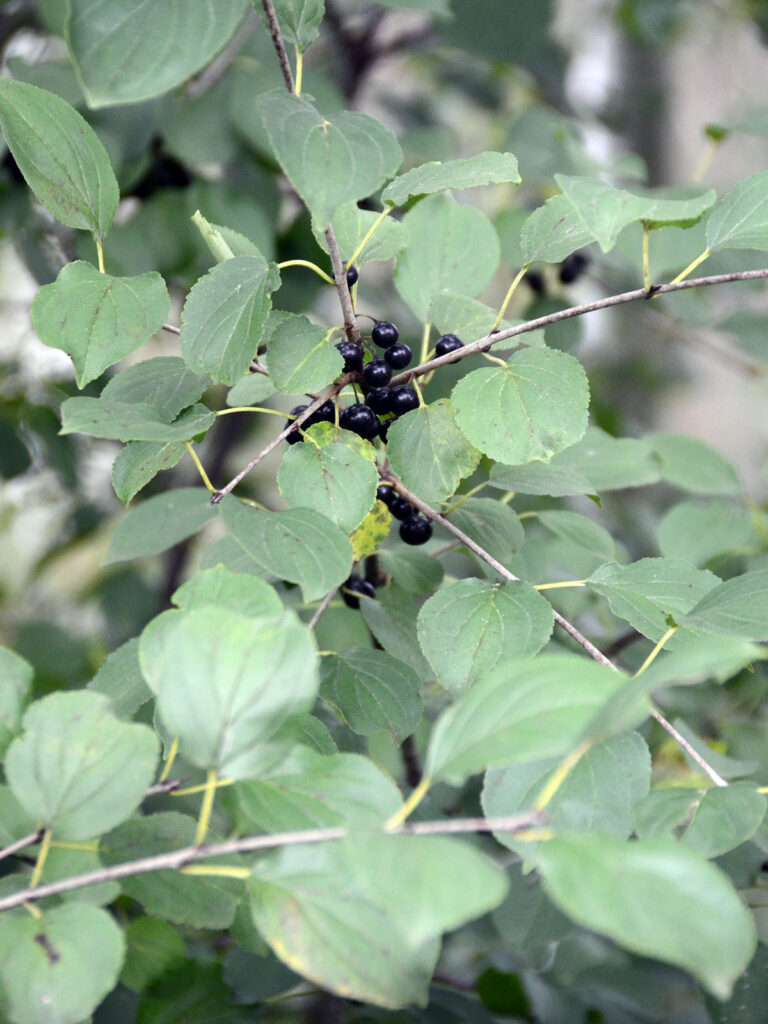
It’s hard to find any natural area without buckthorn.
Birds will eat the berries, fly away and then poop out the seeds, creating more buckthorn.
Sadly, not only are the berries less nutritious, but as the name implies, they have a cathartic (laxative) effect on birds, even causing death.
NOTE: Not all buckthorns are a problem! There is a native buckthorn species – Alder-leaved buckthorn (Rhamnus alnifolia).
- Learn more:
- CRE de Laval: How to distinguish between buckthorn and native plants
- NY Invasive Species: Common buckthorn
Multiflora rose (Rosa multiflora)
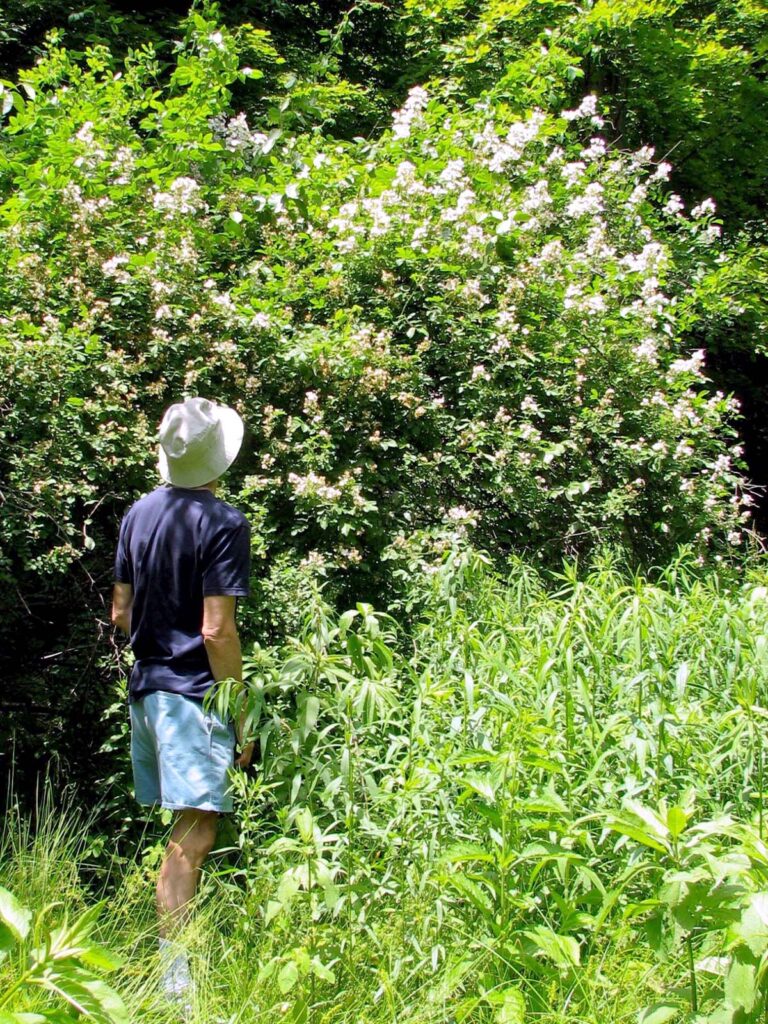
It’s hard to believe that long ago people were encouraged to plant this scourge!
- Learn more:
- NY Invasive Species: Multiflora rose
- Ecological Landscape Alliance: Multiflora rose
Honeysuckle of various types:
Morrow’s honeysuckle (Lonicera morrowii)
Tatarian honeysuckle (Lonicera tatarica)
Amur honeysuckle (Lonicera maackii)
Japanese honeysuckle (Lonicera japonica)
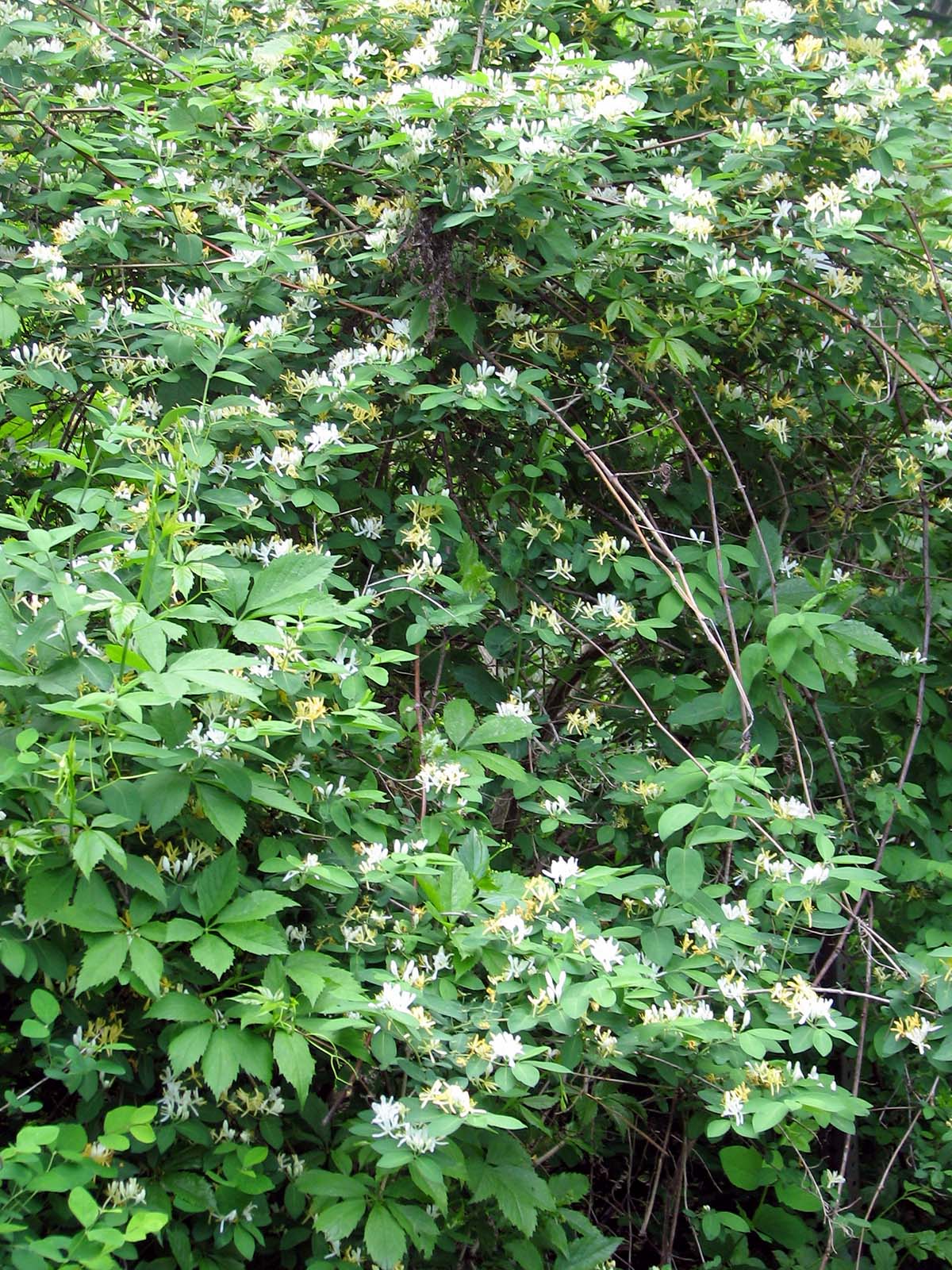
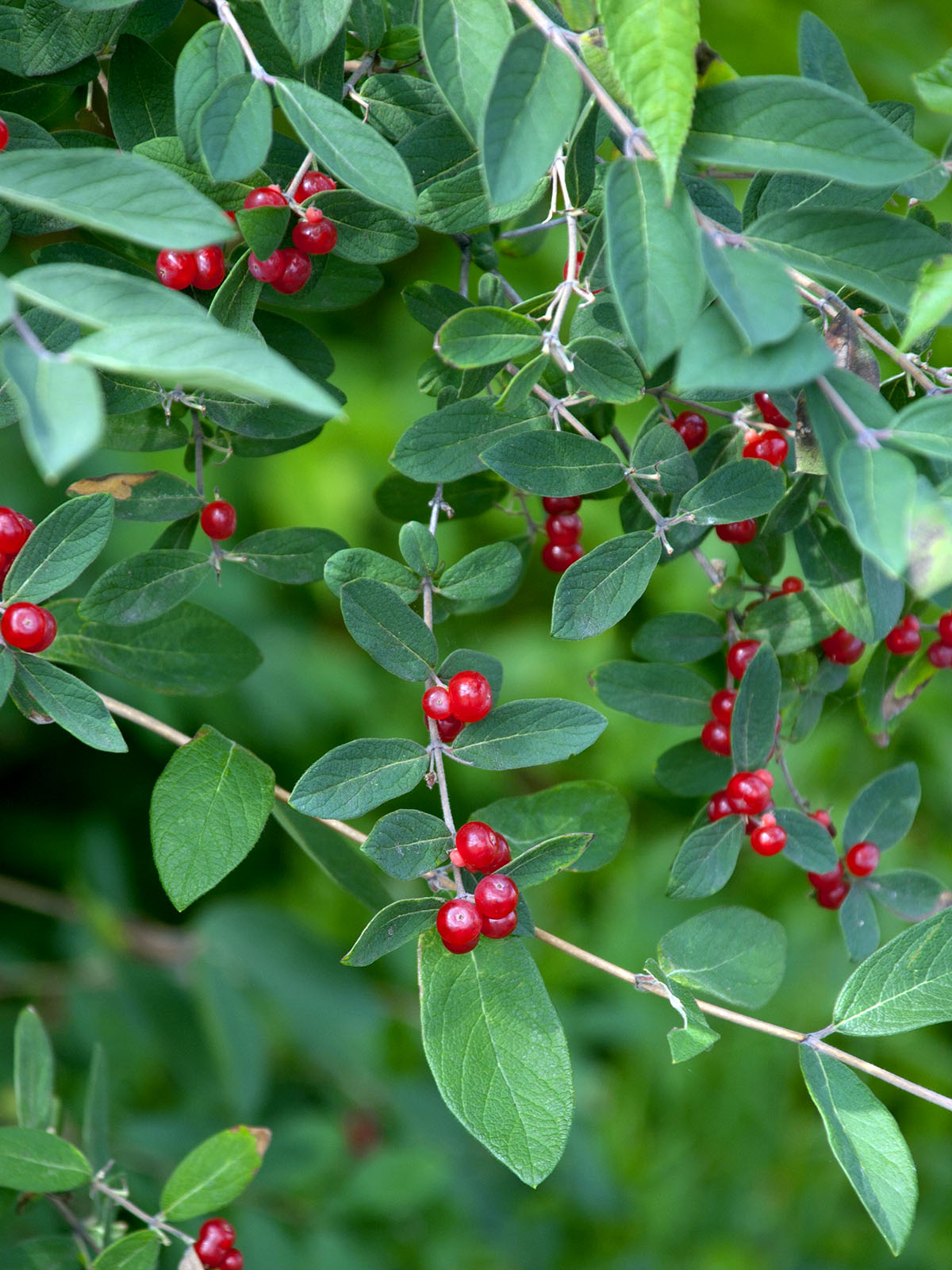
You can guess how this honeysuckle has spread so much. Birds eat the berries, fly away, then poop out the seeds in another location. And yes, birds can eat the berries, but they’re not as nutritious as native berries and the plants take up a lot of land that could be otherwise growing native plants.
- Learn more:
- NY Invasive Species: Bush honeysuckle
(IMPORTANT: This is NOT the plant that is also sometimes called “bush honeysuckle” which is a native plant, Diervilla lonicera, and actually not a true honeysuckle.)
- NY Invasive Species: Bush honeysuckle
Japanese barberry (Berberis thunbergii)
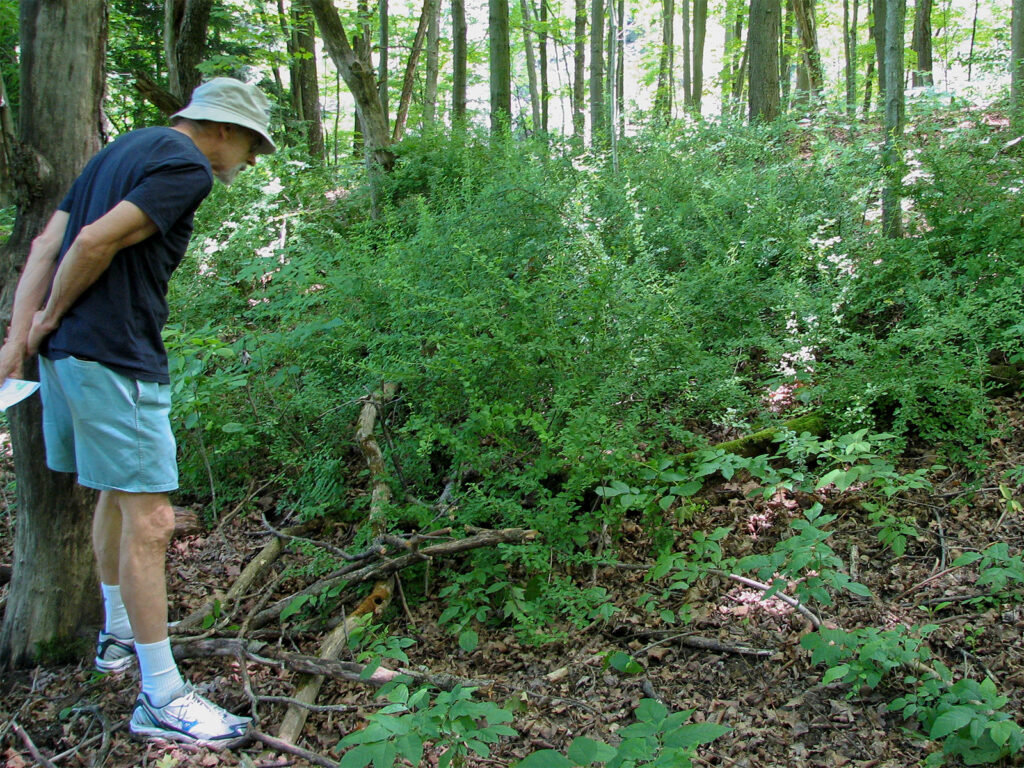
Japanese barberry tolerates shade well, so it spreads easily in forests. It alters soil pH, nitrogen levels, and biological activity in the soil. It also harbors ticks.
- Learn more:
- Ecological Landscape Alliance: Japanese barberry
- NRCS: Invasive plant control – Barberries
Vinca aka Common periwinkle (Vinca minor)
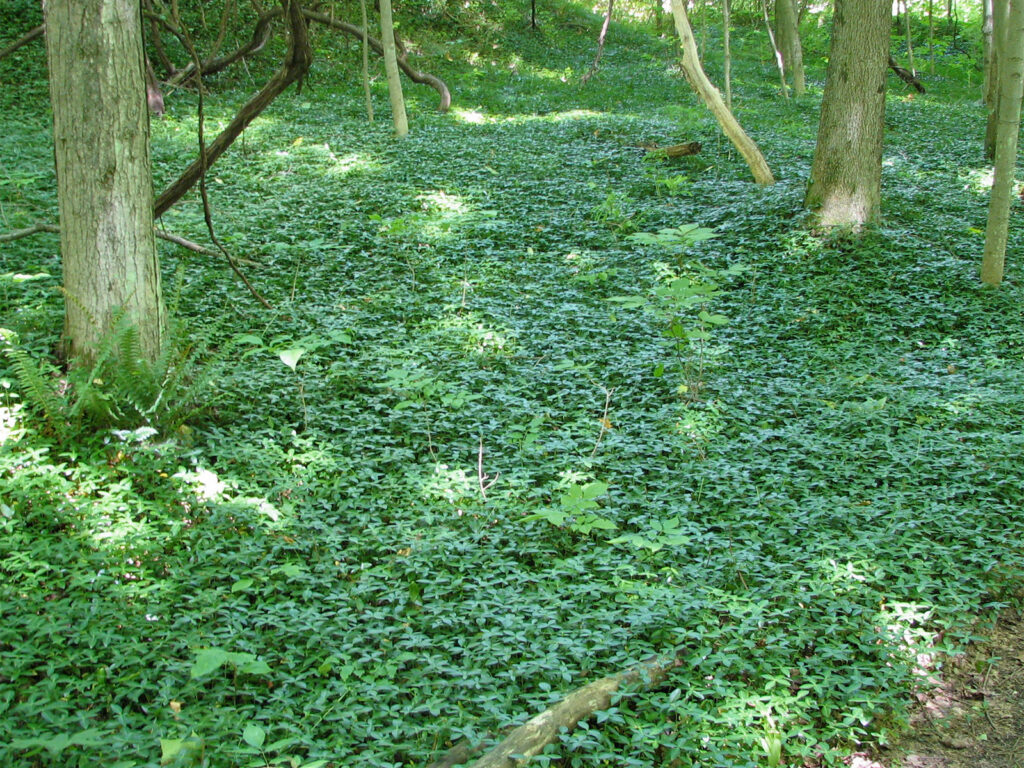
- Learn more:
- Invasive Plant Atlas: Vinca
Burning bush (Euonymous alatus)
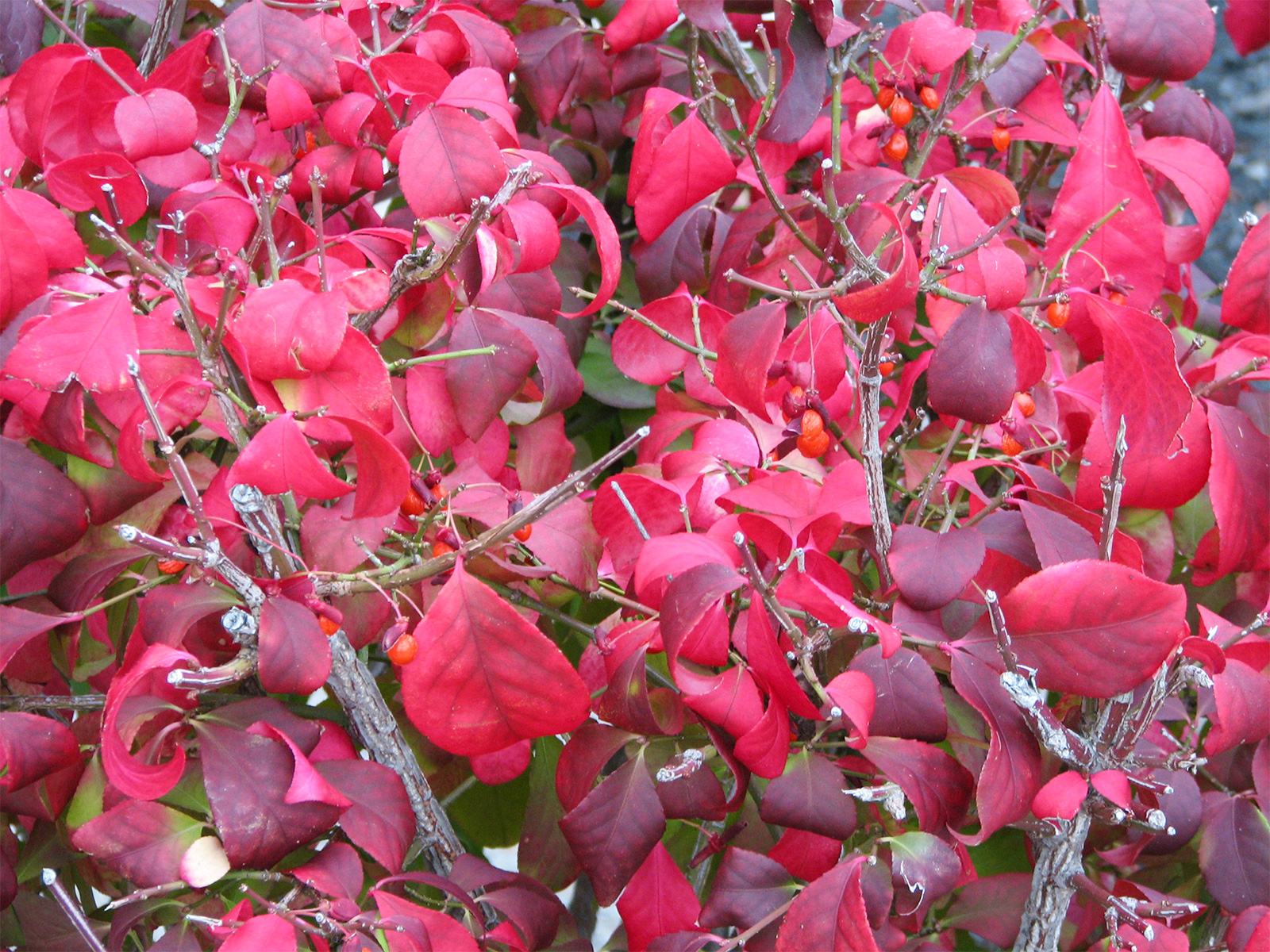
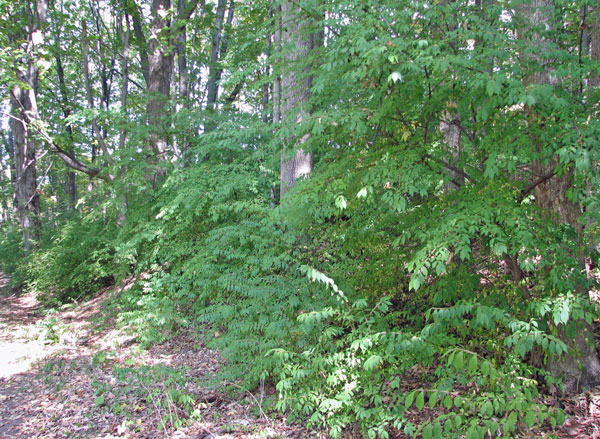
- Learn more:
- Finger Lakes PRISM: Burning bush
Dame’s rocket (Hesperis matronalis)
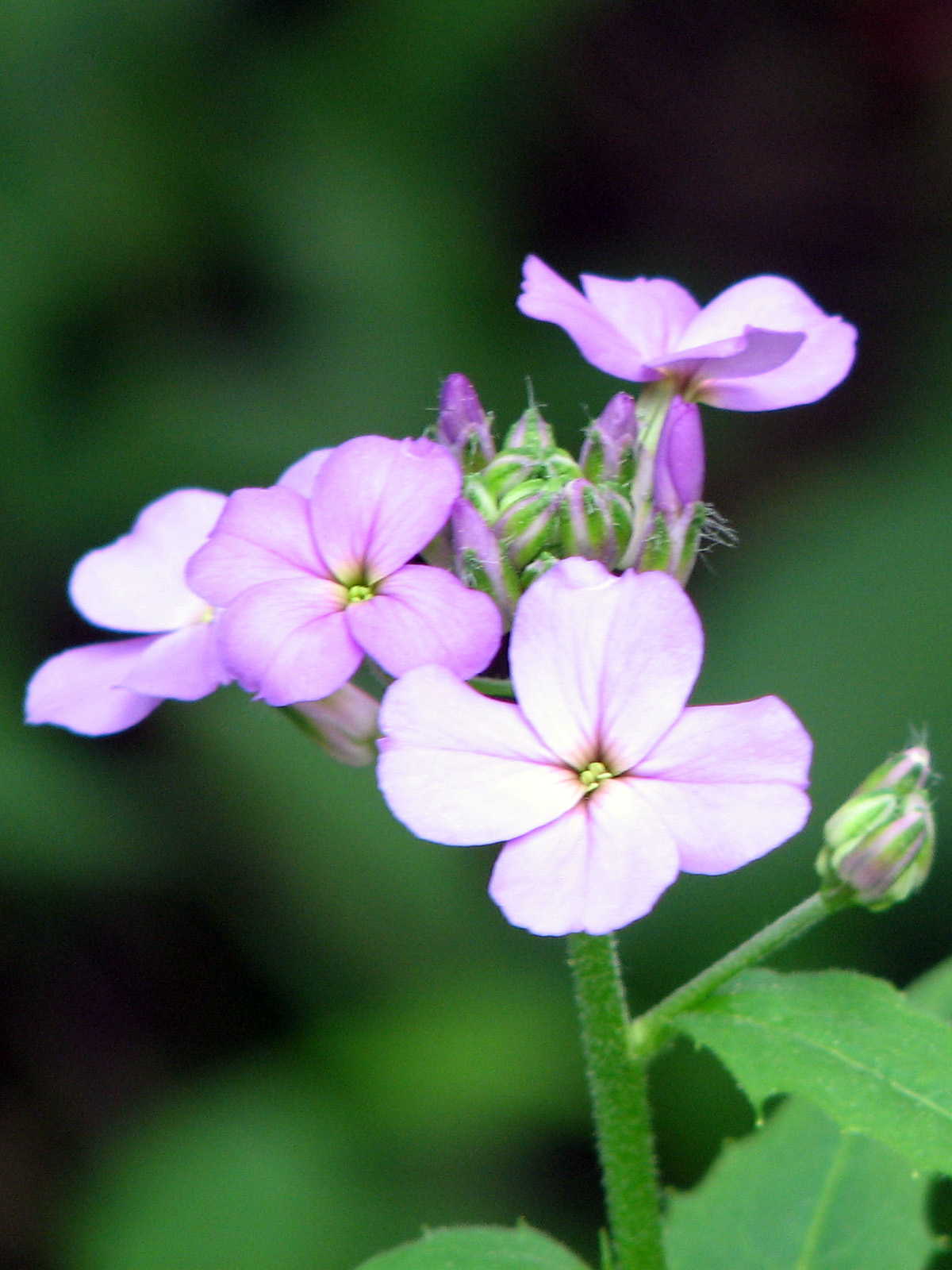
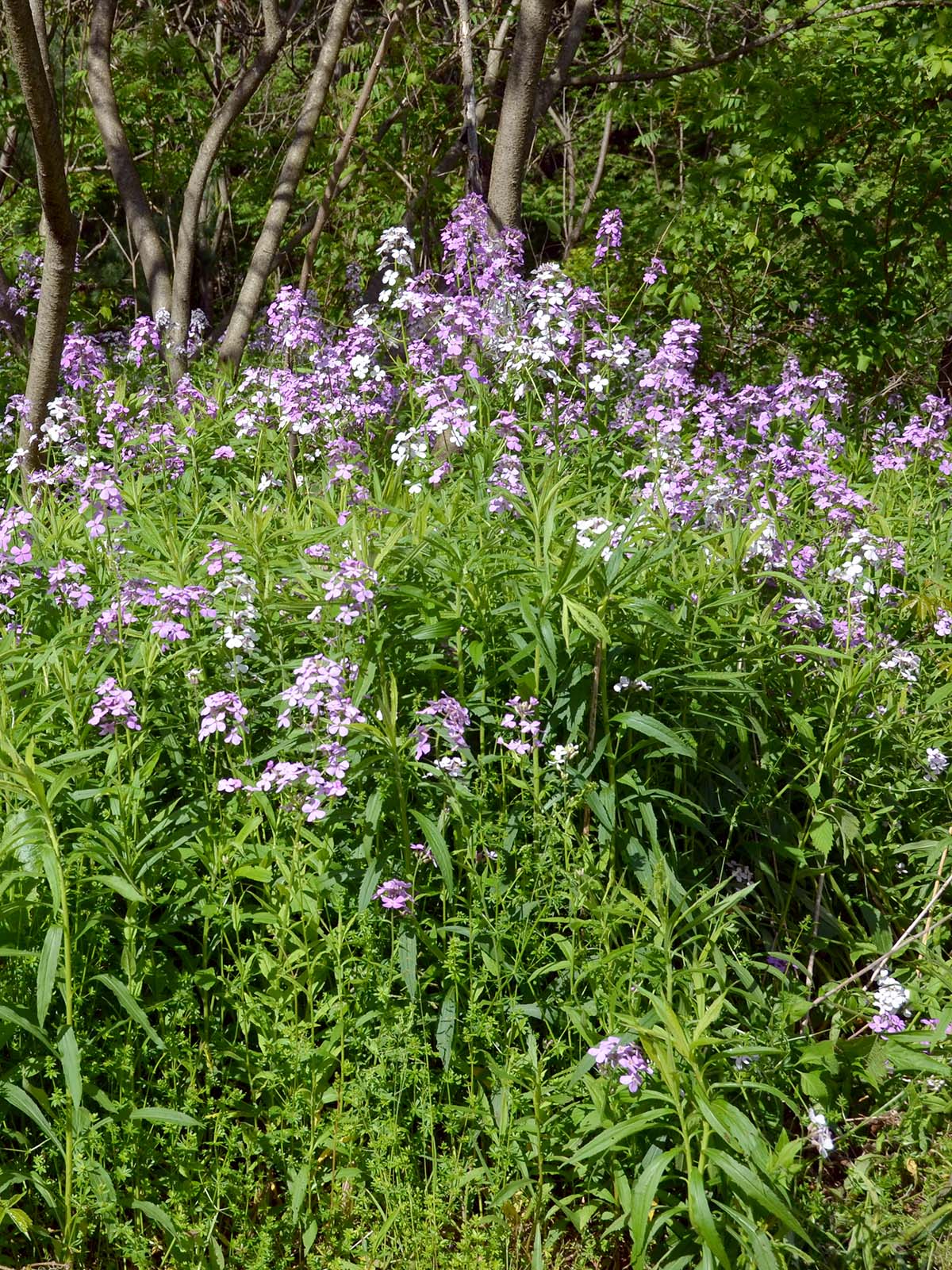
Don’t confuse this with native phlox! How can you tell the difference?
Here’s the trick:
“Phlox” has five letters and the phlox flower has five petals;
“Dame” has four letters and the dame’s rocket flower has four petals.
- Learn more:
- Invasive.org: Dame’s rocket
